Orthodox Therapies
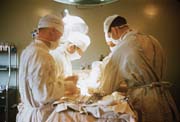 1 Surgery: Where the cancer has not spread, the most common medical treatment is surgery. A cut is made through the abdominal wall (a laparotomy) and the ovaries, fallopian tubes and the womb are then removed. This is called a total abdominal hysterectomy. Chemotherapy may sometimes be used before surgery to make the tumour more manageable in terms of size. Obviously this total removal has implications for hormone levels (and hence all manner of side effects such as skintone and hair loss). In pre-menopausal women it means infertility. Surgery is also used to discover the extent of the cancer. Sometimes the doctors do not know whether there is spread or not until they have operated.
1 Surgery: Where the cancer has not spread, the most common medical treatment is surgery. A cut is made through the abdominal wall (a laparotomy) and the ovaries, fallopian tubes and the womb are then removed. This is called a total abdominal hysterectomy. Chemotherapy may sometimes be used before surgery to make the tumour more manageable in terms of size. Obviously this total removal has implications for hormone levels (and hence all manner of side effects such as skintone and hair loss). In pre-menopausal women it means infertility. Surgery is also used to discover the extent of the cancer. Sometimes the doctors do not know whether there is spread or not until they have operated.
In cases where the cancer has spread to the bowel, the surgery may well be accompanied by some removal of the colon. You should ask your surgeon about this risk, although he may not know the level of spread before he operates.
2 Chemotherapy: Most commonly used after surgery, when there is spread or a fear of remaining cancer cells. The most common drugs used are Taxol (paclitaxel), cisplatin and carboplatin. Topotecan, gemcitabine and doxorubicin might also be recommended. For information on your Cancer Drugs and chemotherapy click here.
A huge international study of 477 women with early ovarian cancer from 84 centres in five countries concluded that Carboplatin is the gold standard chemotherapy for these particular ovarian cancer patients, although in the US they continue with the combination of carboplatin and Taxol.
Dr David Guthrie explains that even if surgery appears to remove all visible evidence of ovarian cancer, some microscopic deposits may persist and cause a recurrence in about a third of patients diagnosed at an early stage.
The key question for oncologists has been whether to wait and see, and give chemo only when a recurrence is found, or to give it routinely after surgery. This recent trial however suggests that survival is increased by 9 per cent if Carboplatin is given within six weeks of surgery.
The recent discovery of mutated genes in ovarian cancer may well lead to a whole new generation of targeted drugs. 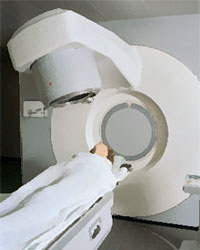
3 Radiotherapy: This is rarely used for ovarian cancer usually after surgery and chemotherapy have been tried, and to manage pain. The beam can hit other tissues and cause damage and side effects which you should ask about. You should also look at our article on how to maximise the effectiveness of your Radiotherapy. So does it all cure ovarian cancer?
Yes, I did use the word impotence above, and well I might. You should be aware of the following:
1. Charn et al in the British Journal of Cancer vol 95 Issue 10 in 2006 have concluded from Research at Stamford UCLA, that younger women diagnosed with ovarian cancer have a greater chance of 5-year survival. Especially women under 30 although then the researchers admitted there arent too many of those!
2. The same researchers found that there was no significant survival difference amongst the 16-40 year old child-bearing group whether they had uterine sparing surgery or those who had standard surgery removing the womb as well. So you might as well spare your uterus.
3. The Journal of Nat. Clin. Inst 2006; 988 carries a phase II trial where women were given the drug Topotecan as well as carboplatin and paclitaxel. The research, conducted in Germany, concluded there was no increased benefit overall survival remained at about 44 months, mean survival was18 months exactly the same as on the normal chemotherapy route and this did not increase with topotecan.
4. The Lancet Oncology (Vol 7 Issue 8; 607) reports research on patients having chemotherapy and radiotherapy. The radiotherapy only route produces a 4-year survival of 63 per cent. The chemotherapy adds nothing at all. The researchers from the cancer centre in Serbia and Montenegro concluded that there was no benefit in having chemotherapy over just radiotherapy.
Putting together a treatment plan
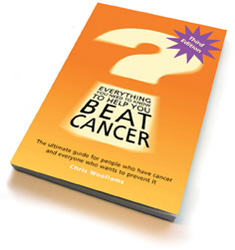
Fret not there is so much you can do mostly to help yourself. When my daughter developed her brain tumour and was given just 6 months to live we found out so many things that could help but it took at least 6 months hard work and a pair of science degrees. The aim of this site is to short circuit all this for you and to empower you to pass on all our knowledge, our research findings, the expert studies and the possible causes so that others can benefit immediately. This is also why, when the doctors asked me, I gladly wrote Everything you need to know to help you beat cancer. The book has been a best seller in the UK for three years and you cannot even buy it in a shop only direct from the charity via Natural Selection’s shop - click on the tab at the top of the page!!
Now, lets first try to understand what is going on, and what factors might be maintaining this cancer, helping it progress in your body.
What are the possible contributory factors to Ovarian cancer?
-
Certain risk factors have been officially identified: For example women who have no children are more likely to develop this cancer, and women who start a family after 30 also have a slightly greater risk. Menstruation patterns are also implicated - more monthly periods may increase the risk; women who began their periods before the age of 12, who had a late menopause and did not breastfeed may also have a higher risk.
Dr David Guthrie, consultant clinical oncologist at the Derbyshire Royal Infirmary, stresses that childbearing patterns and ovarian cancer are markedly linked: This cancer is rare in the now scant number of women who have had four or more pregnancies. The unfashionable message seems to be that falling birth rates are bad for ovarian health. However, women who have undergone tubal ligation to prevent pregnancy or had a hysterectomy also seem to have lowered risk, though this is definitely not a reason for choosing surgery!!
-
Women who have had breast cancer are more likely to develop ovarian cancer.
So, you may be starting to feel that there is an oestrogen factor at work, just as there has been increasingly shown for many cancers. Oestradiol a particularly aggressive form of oestrogen is known to fuel the fire of many cancers and it is likely that ovarian is one of them.

That has implications then for
a) poor dietary and eating habits having two large meals a day rather than grazing, causes insulin rushes which in turn stimulates oestrogen levels in the body. Eating large quantities of sugary food or refined/processed foods like white bread, refined pasta, refined rice, cakes will also stimulate these hormones.
b) the use of synthetic hormones. While the jury is still out over the contraceptoive pill and ovarian cancer risk, it is not for HRT. In the Boston Nurses study HRT, increased risk of ovarian cancer by 40 per cent after 7 years and 70 per cent after 11 years. This risk has been confirmed in the US in 2003 and with CRUKs million women study. Synthetic oestrogen and synthetic progesten seem implicated. (
NB Synthetic Progesten has been implicated in the risk of several cancers. Natural Progesterone, which you make yourself, is on the other hand very protective. Please read our article on
Natural Progesterone.)
Despite its vexed reputation for womens health overall, several studies for the birth control pill actually suggest it lowers the risk for ovarian cancer in women who have taken it for five years. After ten years, says Dr David Guthrie, the risk reduction is a marked 50 per cent.
(Ed: We worry that this is a bit of a generalisation. Rather, we would suggest that protection could depend upon the levels of hormones in the pill and indeed the mix of hormones. We are not sure that all forms of contraceptive pills have this sort of benefit, especially since they often use the same synthetic hormones that have proved so risky in HRT)
c) Increasingly xeno-oestrogens - eg. Phthalates from plasticisers in bottles, BPA from white can linings, toluene in perfumes and nail polishes, and chemicals in pesticides like DDT and Lindane - are known to mimic the action of oestrogen once inside the body. Dr Ana Soto in the USA, one of the Worlds leading experts on this subject, has shown that these can have a cumulative effect. They are stored in fatty tissues of the body.
d) Overweight women are more at risk from cancer in general. Fat stores toxins and hormones you would normally want to excrete, and indicates poor eating habits and a less active lifestyle, all contributory factors.
-
Chlamydia, a sexually transmitted bacterium, has been implicated in about a third of ovarian cancers according to US research. There is also a little evidence from two US studies that HPV might sometimes play a role. HPV is a sexually transmitted virus that has had vaccines developed to prevent several strains causing their damage in cervical cancer.
-
Family links:
 A woman with two or more close relatives with ovarian cancer.... carries a greater risk
A woman with two or more close relatives with ovarian cancer.... carries a greater risk 
In the past few years scientists have learned much more about genetic predisposition to this form of cancer. The BRCA1 and BRCA2 genes which women can inherit from their parents are designed to prevent cancer by making proteins to inhibit abnormal cell growth and repair DNA structures. Mutations on these genes can thus heighten ovarian cancer risk by weakening your natural defences. These genes are, however, present in less than 7 per cent of all women. The lifetime risk of developing ovarian cancer for women with either of these two mutations rises to something between 17 and 44 per cent. In the USA women can be tested for genetic problems and some women with BRCA mutations actually have preventative surgery.
-
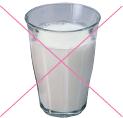
There is clear research from both the US and the Karolinska institute that dairy increases ovarian risk. Research published in the American Journal of Clinical Nutrition tracked 61,000 women for 13 years. Women who consume a lot of dairy have an increased risk and specifically women who consumed more than the equivalent of a pint of cows milk a day have twice the risk.
-
Theres been some suspicion that the use of talcum powder in the genital area could double the risk of ovarian cancer: Two out of nine research studies suggested a significantly raised risk and another five a slightly increased risk.
-
There is some research that certain toxins, for example mercury, can heighten risk of this cancer; and there is research on deficiencies oin vitamins B-12, folic acid and other B vitamins being linked to increased risk.
Cutting out the risk factors and strengthening your body
Now, the important point is that we are not listing the possible contributory factors so that you dwell on things that have happened in the past. We want you to understand what factors might still be present in your life and might be contributing to the maintenance of your cancer. Then you can formulate an action plan. There are, for example, minerals you can take, like selenium, or complex compounds like chlorella that can help you eliminate heavy metals and certain toxins, if you fear they have played a part. Or you can act in a number of important ways to lower the oestrogen (natural  and synthetic) in your life oestrogen that might be fuelling your cancer right now. (We even have a short book: Oestrogen the Killer in our midst that you might be well advised to read as it tells you exactly how to reduce oestrogen in your life). You can find out comprehensive information on these topics and more elsewhere on this site. In particular we recommend you read The 4 Pillars of Cancer especially Pillar II.
and synthetic) in your life oestrogen that might be fuelling your cancer right now. (We even have a short book: Oestrogen the Killer in our midst that you might be well advised to read as it tells you exactly how to reduce oestrogen in your life). You can find out comprehensive information on these topics and more elsewhere on this site. In particular we recommend you read The 4 Pillars of Cancer especially Pillar II.
So, whats a girl to do?
 Click here and read our article "What is Cancer"
Click here and read our article "What is Cancer"
The American Cancer Society recommends a diet high in fruits, vegetables and wholegrain cerials with a limited intake of red and processed meats. Thatll cure you - Oh dear!
Clearly from the above list of possible contributory factors, there could be some at work actively maintaining the problem. And most can be effectively addressed. So, there are some important things you should consider doing for yourself immediately and around your doctors expert recommendations.
You can plan your own, all-embracing, cancer treatment programme, with Cancer - Your first 15 Steps and, as we said above, you can understand far more about all your options by reading all IV Pillars of Cancer. Then:
-
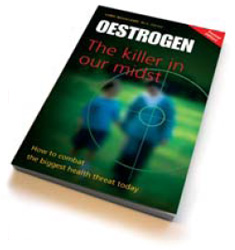 Try reducing your dangerous oestrogen levels. You can find a lot about this if you specifically read Pillar II on the causes of cancer. Being overweight can be corrected and helps (North Carolina University have research that proves it), cutting toxic household and toiletry products, cutting pesticides, taking Indole 3 carbinol, taking melatonin (and being very wary of EMFs ) and developing regular sleeping habits are all small factors but they can add up. See our book: Oestrogen the Killer in our midst for practical ways of cutting your excess oestrogen.
Try reducing your dangerous oestrogen levels. You can find a lot about this if you specifically read Pillar II on the causes of cancer. Being overweight can be corrected and helps (North Carolina University have research that proves it), cutting toxic household and toiletry products, cutting pesticides, taking Indole 3 carbinol, taking melatonin (and being very wary of EMFs ) and developing regular sleeping habits are all small factors but they can add up. See our book: Oestrogen the Killer in our midst for practical ways of cutting your excess oestrogen.
-
Then there are factors such as regular exercise shown by several studies in the USA to reduce mortality by 50 per cent.
-
-
Diet is a very important factor. We have a
section on diet as a helpful addition to your orthodox package, but some patients choose to go further still, with actual
Diet Therapies like the
Gerson Therapy, or a visit to
Dr Gonzalez New York Clinic. He has clinical trials on his work which involves diet, supplements and pancreatic enzymes.
-
Giving up
dairy, eating sensibly and understanding whether you have an imbalance in your intestinal flora and thus a weakened immune system are issues to consider too.
Recently there has been an enormous flury of research on the role of beneficial bacteria in our bodies. You really should read our article on the subject, and the links to cancer. Over 4000 research studies and 100 clinical trials have shown that Beneficial Bacteria in the gut:
-
stimulate and strengthen the immune system
-
-
help produce short chain fatty acids which reduce harmful fat production (like cholesteroil)
-
can actually chelate to (bind to) heavy metals and help excrete them
-
Note the role in producing B vitamins and reducing unwanted oestrogen. Beneficial bacteria can also control nasty bacteria like chlamydia.
 There are over 800 strains of bacteria in the gut - a dozen or so seem, so far, to have the greatest impact on our health.
There are over 800 strains of bacteria in the gut - a dozen or so seem, so far, to have the greatest impact on our health. 
60 or more years ago we would consume daily supplies of a number of strains but we no longer live on farms nor drink raw milk and, instead, we chlorinate our water, fill our chickens with antibiotics, irradiate our food and pasteurise everything that moves. Worse we take drugs, antibiotics and anaesthetics which deplete our stores further.
There is another school of thought that explains that these Beneficial Bacteria at night feed off the yeasts, microbes and non-beneficial bacteria we accidentally consumed during the day. Yeast infection is now endemic. It is estimated that 70 per cent of the population has excess yeasts signs in men include bloating after meals, yellow toe nails and athletes foot. In women the signs are thrush, cystitis and bad breath and/or bloating, plus an inability to lose weight.
If you are looking for supplements click on the tab at the top of the page and go to the Natural Selection shop where they have selected the best of the best and you can buy with confidence.
Try reading Can Candida cause cancer? on this web site it will help you take action.
Consider this quote: Cancer patients undergoing chemotherapy did not ultimately succumb to cancer, but to an infestation of Candida albicans. That comes from the 1993 Spring edition of the prestigious US medical journal Contemporary Oncology. Topping up with probiotics (strains of beneficial bacteria shown in clinical trials to deliver a benefit) and following a prebiotic based diet lots of whole foods and whole grains with no sugar, dairy or alcohol and certain yeast killers will help defeat the Candida albicans. Its all in the article. The recent finding that women who take more than 25 lots of antibiotics in their lifetimes have twice the risk of breast cancer, is just one more factor pointing the finger at yeast infection and a lack of enough beneficial bacteria in the body.
 6. A VEGA check can tell you about infections such as chlamydia and a good naturopath can help you fight any such parasites including yeast infections
6. A VEGA check can tell you about infections such as chlamydia and a good naturopath can help you fight any such parasites including yeast infections
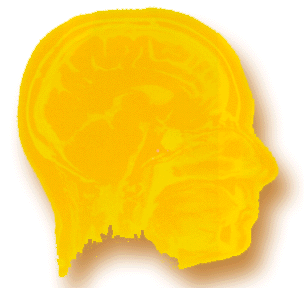
7. Many people who have ovarian cancer internalise a lot of practical problems. Problems at work, with the family and finances are all stresses that they take on. They will try to please everybody and they try to help everybody. The practical chakra is located in the lower abdomen and this becomes out of balance. Many patients find energy therapies like accupuncture, cranial osteopathy and Reiki a great help. Start with our kiddies guide to therapies. Counselling and hands-on healing are also significant benefits. Some people have successfully gone to visit John of God. It sounds extreme, but he does actually cure some people or rather, as he says himself, God Cures. He is free but you have to get to Brazil!
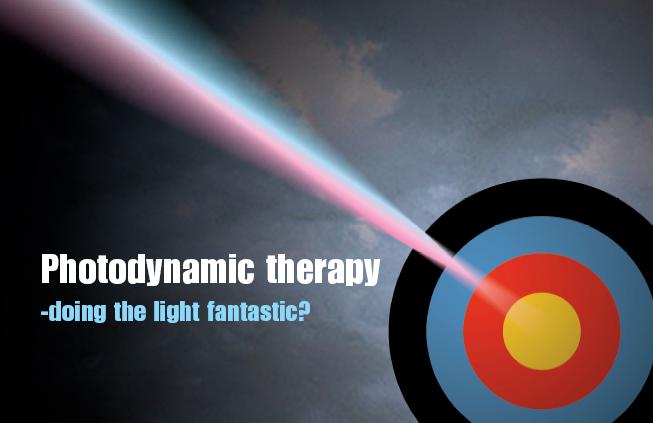 8. You can even find out about Alternative Therapies (and all the research) on our web site, like Photo Dynamic Therapy: this uses an agent which finds its way to the cancer. Then light of a certain frequency is shone on that agent to produce an oxygen free-radical which kills the cancer cell. For many years this treatment was hampered by the need for the tumour to be near the body surface in order to deliver the light. Recently there have been huge advances in the agents, lasers and delivery mechanisms.
8. You can even find out about Alternative Therapies (and all the research) on our web site, like Photo Dynamic Therapy: this uses an agent which finds its way to the cancer. Then light of a certain frequency is shone on that agent to produce an oxygen free-radical which kills the cancer cell. For many years this treatment was hampered by the need for the tumour to be near the body surface in order to deliver the light. Recently there have been huge advances in the agents, lasers and delivery mechanisms.
Or go to our Home page to find a list of the ten hottest topics we have covered recently we promise one or two will definitely be relevant to you.
Finally why not read about others who have beaten this disease in Living Proof. You will be able to pick up important insights and see that it can be done!